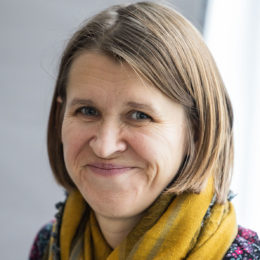The ancient polytheistic world is full of deities, diverse as human society: female, male, indigenous and incomers with the new politic settings and cultures in contact.
Aleksandra Kubiak-Schneider
The territories of Syria, Mesopotamia and Arabia present a mosaic of cultures, people, traditions and gods especially in the period between the 4th century BCE to the 4th century CE. Thanks to inscriptions, architecture, works of art we are able to acquire knowledge about the religious life of people in Near Eastern cities. As linking element to verify the hypothesis about the polytheistic religious systems mirroring the multicultural and multiethnic societies was chosen the worship of two goddesses, Atargatis and Allat, who received cult in different, at times distant places like Palmyra (Syria), Hatra (Mesopotamia), Petra (Arabia), etc. This project is unlike earlier research focused only on one aspect (like architecture) generally limited to one archaeological site, where the goddesses were venerated, leaving aside human component of worship and its broader context. This project examines on which scale the divine society imitates the human model and to which degree it can influence social changes. The choice of the goddesses is not only based on their popularity within the material evidence, but also on the shared iconographic features as being represented as seated on a throne flanked by lions. What does it mean for the position of the goddesses and women? Why this particular motive connects these two deities? To understand social roles of men and women in the cult, I will argue that it is necessary to understand the role of goddesses in the local panthea, their images and names within the position they take among people who pay homage and serve them. Concerning the cult of female deities, there is a question of the position and role of male and female worshippers: are they visible in the studied material, what is their role? Are there also men involved in the rites and what is their function? Which cultic personnel participated in the cult of these particular deities? These are only a few essential questions touched within this project. It is believed that in the past women did not have a strong position in the society, who were “only” mothers and daughters. The same stereotype was applied to the goddesses who were and are seen as mother-goddesses of fertility, forgetting about the war, nature and other divine competences of female deities. This project is the first, which poses openly the question: to what degree the biological sex of the worshippers was important in the context of cult of the goddesses? It analyzes the involvement of society with cultural, i.e., gender roles of its members. Thus, the project enriches the modern debate on the position and role of the women (also as female divine figures) in the religious systems. This is definitely a big impact on the study of the ancient cultures and religions to see them through the eyes of the people.
The result will form useful comparative material for historians, archaeologists and all who are interested in the roles of men and women in ancient societies, organization and administration of cultic places and interplay of traditions and patterns in the context of ancient religions. One of the results of the project will be visualization of the network of worshippers and reconstruction of the worship of the female deities within the ancient societies in Syria, Mesopotamia and Arabia. The results will influence the view of ancient societies and the cultural role of man and women in its religious aspect, which is still covered with many stereotypes. It will reveal the “human” activities within the cult of the goddesses, making the antiquity more “impersonated”, so to visualize how the nowadays remains were full of life and people. I will create as for broader audience who can follow up the work in progress as well as organize events for public to discuss and make people curious about the pre-modern societies and processes to focus on the aspect that there are not so many differences between US and THEM.
Project details
Project title: People of the gods: the worshippers of Allat and Atargatis in the Near East from 4th century BCE – 4th century CE.
Principal Investigator: dr Aleksandra Kubiak-Schneider
Host institution: University of Wrocław
Project duration: 01.09.2022 – 31.08.2024
Project’s website: www.al-at.eu

